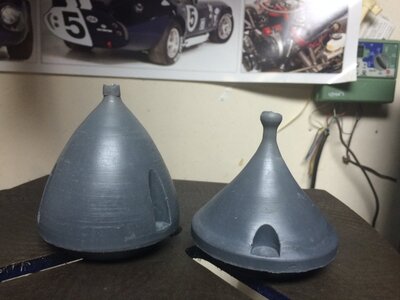speedysprocket
Alex
- Location
- Chesapeake, VA
Just wondering if anyone making stuff out of plastic or urethane can or wants to speak to the process. I want to make some pump cones, and while I learned some things to speed up the process on my first attempt last night, it still will take me longer than I want to turn them on my lathe out of a solid piece of delrin. So I'm interested in simpler and cleaner methods...
Can anyone recommend a good material for a cone? Would I be able to mold the whole thing at once, or mold the cone solid and then machine the inside out...?
Can anyone recommend a good material for a cone? Would I be able to mold the whole thing at once, or mold the cone solid and then machine the inside out...?

